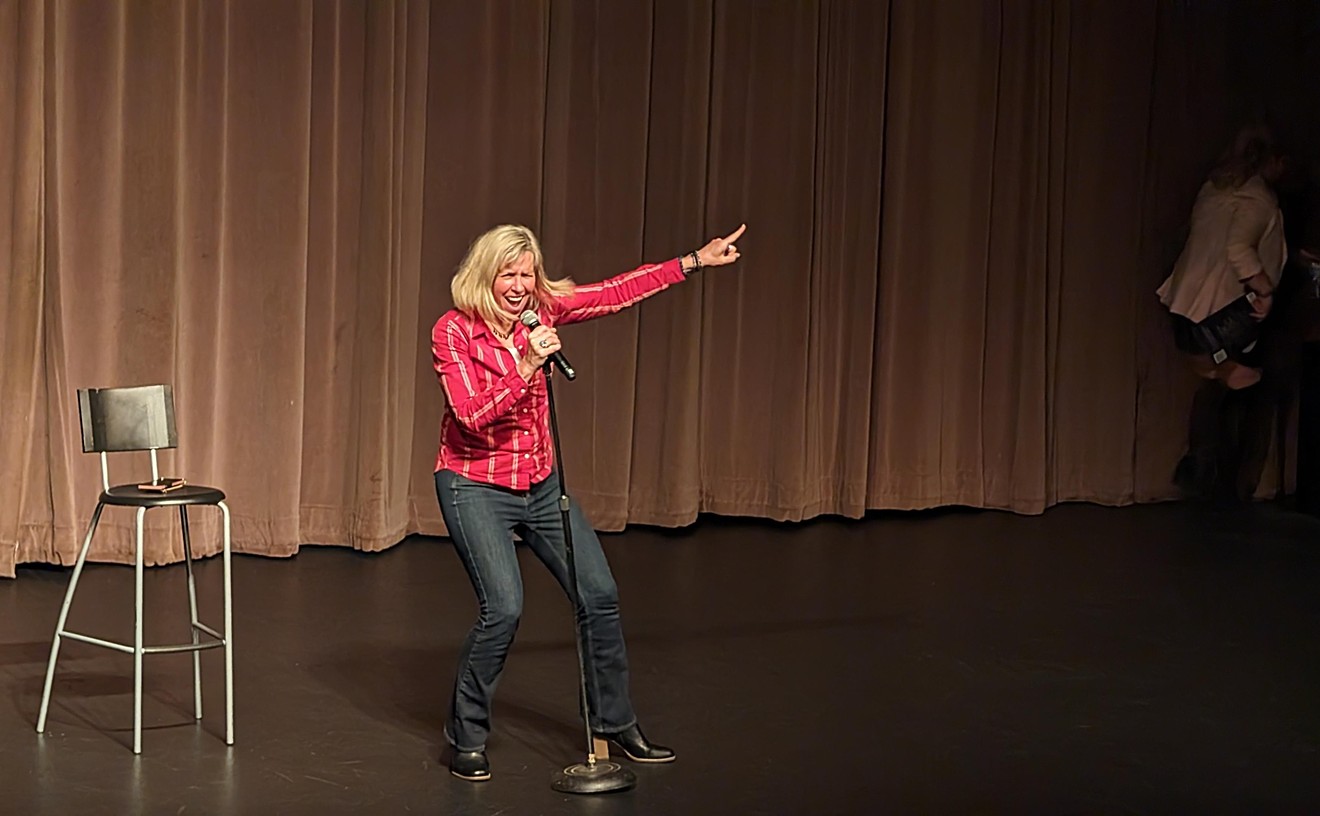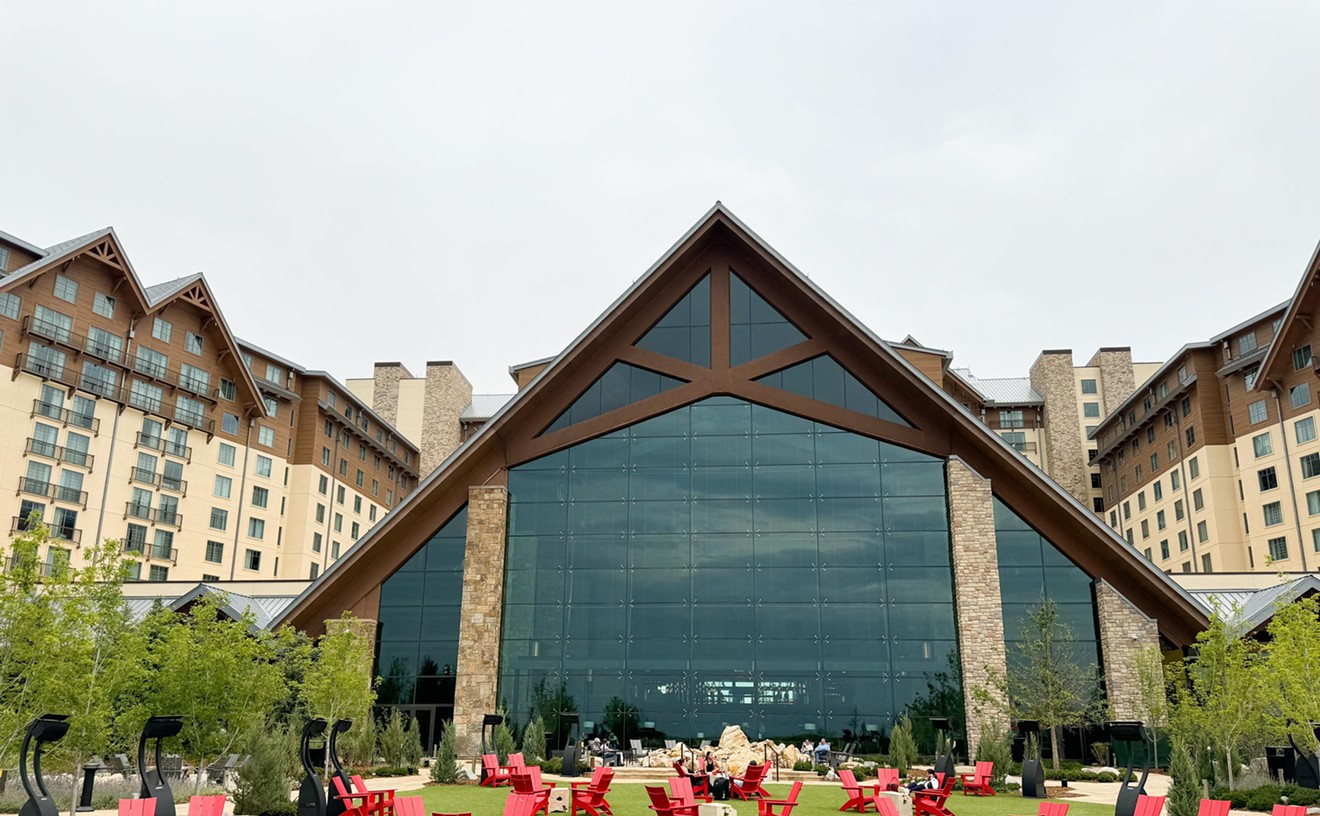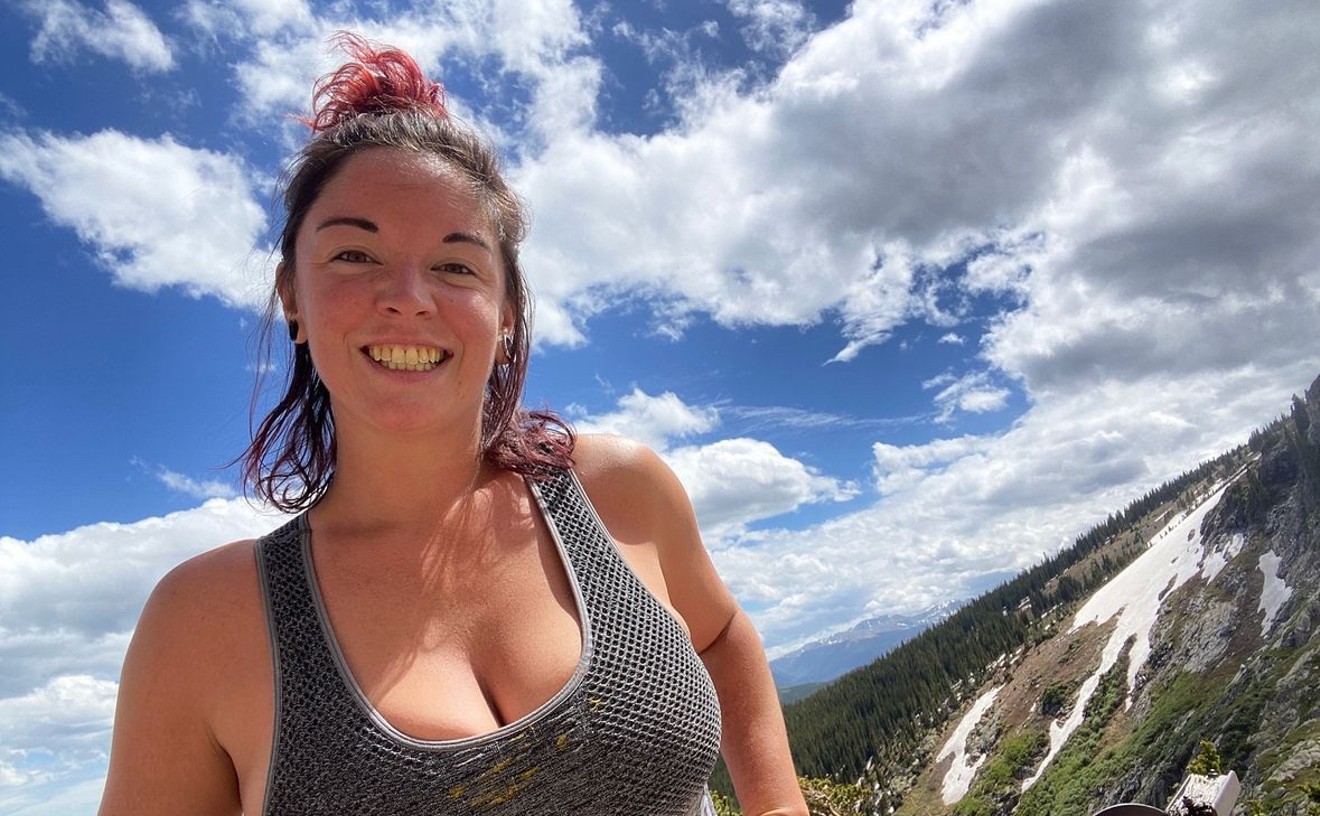The Robischon Gallery never disappoints: Not only is every show there worth seeing, but every piece is always perfectly installed in the elegant maze of showrooms that make up the place. Credit for this goes to directors Jim Robischon and Jennifer Doran, who pull off an experience time after time that's more like going to a small contemporary art museum than a big commercial gallery. As a result, it is the city's flagship fine-art venue.
You might think that this kind of establishment status in the hierarchy of the art world would lead Robischon to take a safe course with its exhibition schedule, but that's not the case. Robischon has embraced experimental art for decades — and that's certainly true for the four solos in the gallery's fall opener, all of which focus on photo-based methods, including video.
The star attraction is Halim Al Karim, consisting of large photographic prints by this well-known Iraqi refugee and part-time Colorado resident. The photos occupy the entry spaces and the immediate ones beyond, but visitors will probably first notice the enormous custom-made bellows camera on display; Al Karim uses it to take the images he develops in the obsolete wet-collodion process. Two of these collodion prints are included, and both look, save for their enormous size, like nineteenth-century imagery.
The main part of the show begins beyond, with the half-dozen large portraits done in lambda prints and mounted on aluminum panels. These photos seem to be related to Al Karim's work of a few years ago, when he focused his lens on the eyes behind the veils of Islam-observant women from the Middle East. As in that body of work, the subjects in these new pieces are hidden, but this time by paint. The resulting monochrome figures with obscured details were created through the application of paint directly to the models, and by later applying it to the back of the preliminary images. He also shoots them through silk panels, which creates a gauzy effect. The results, as in "Eternal Love 11," are tremendously monumental and strikingly new-looking.
The Al Karims are an artistic family: Halim's brother Sami, who lives in Colorado, is the subject of another of the Robischon solos, titled Sami Al Karim. When I first became aware of Sami's work, he was doing huge, billboard-sized color-field paintings that were absolutely fabulous. But in the two-part show on view now, he's turned to photography and photo-montage. The large photos of the sky from his "Dream" series, installed in one of the central spaces, reveal a connection to those abstract paintings he used to do, but the dense, stacked images of buildings displayed in the small gallery in the back are very different. In these works, from his "Identity Steps" series, Sami has made montages in which Middle Eastern architecture and Western buildings are transparently laid on top of one another, with both being revealed at once in a dense skein of lines.
Also on the roster at Robischon is David Zimmer, showcasing pieces by a Colorado artist long interested in employing high-tech materials. Among the works on view — which include one of his signature bell jars with a video of a bird inside conveyed by a little LED screen — is a wall installation made up of a half-dozen photographic light panels from the artist's aptly named "Vapor" series. The subjects are quite traditional — depictions of the sea, the land and the sky — but the presentation is anything but, in particular that lurid acid-green color each panel emits. I was also struck by "Cycle," an LED video construction depicting sea foam in a stunning purple. Even though the "Vapor" pieces and "Cycle" depict natural scenes, those unnatural colors give them a glamorous nightclub quality.
The last of the quartet of shows at Robischon is Maria Friberg, in which two of the internationally famous artist's video projections are being screened. In both — "Blown Out" and the more ambitious "Calmation," which has a soundtrack — the theme is man's struggle against nature. The two pieces show a man actively keeping his place, and keeping his head up, in the rushing waters of a river. They are both rhapsodic and somewhat disturbing.
And speaking of disturbing, in other news, many students and nearly all the longtime faculty at the Rocky Mountain College of Art + Design have been reeling from a new "educational" plan (read: "profit" plan) blandly labeled the Multi-Platform Learning Experience that will be imposed on them next year. Briefly, the plan creates shorter, eight-week terms, meaning more tuition for students and more obligations for teachers.
A principal aim of the change is to better embrace online learning, but it seems obvious to me that art isn't the ideal subject to be conveyed via computer instruction. It reminds me of those home-study courses that were advertised on matchbooks, in the days before the Internet: "Can you draw this bunny?" Of course, those classes were cheap, while an RMCAD degree is not.
For the past twenty years or so, RMCAD has been the place to get an art education in Colorado, but the switch to online learning will surely bring down the reputation of the school. In fact, some people in the art community fear that RMCAD will become nothing more than a diploma mill generating tuition checks, but that may be just what its owners want. The whole thing started more than five years ago, when RMCAD was acquired in part by financial interests who also partially own the Full Sail University chain of for-profit colleges out of Florida. At first the corporate owners took a fairly hands-off approach, allowing RMCAD's collegial spirit to bloom. I thought then that perhaps the corporate types had decided to handle the little jewel-box campus as a halo property.
But last year, that began to change when several longtime instructors left after being given choices that they felt were untenable. And in the past few weeks, many others have been informed that they will be out after the current term unless they accept the changes.
What made RMCAD special was the group of distinguished artists who taught there; the school could justly claim to have the best studio faculty in town. As a result, from the mid-'90s until now, it has spun off scores of young grads who have revolutionized the art scene in Denver. Though this legacy can't be erased, its future looks pretty murky to me.










